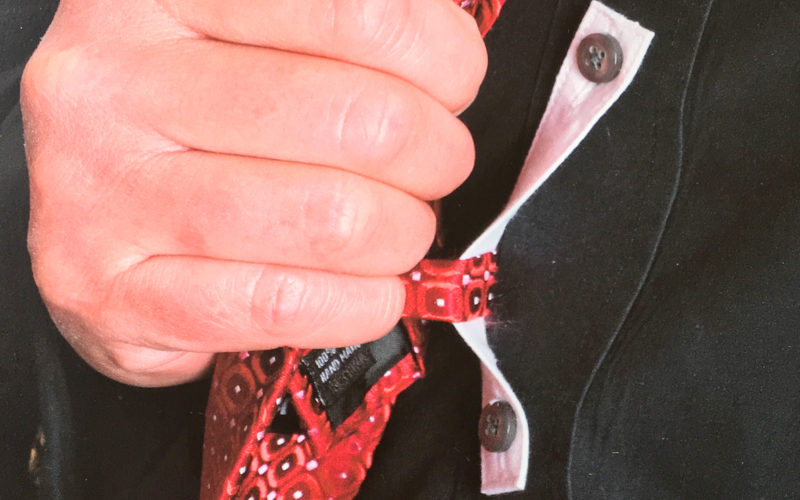Q. I have recently graduated from medical school and am now a pediatric resident. I like to wear a tie, especially because it accents that I’m the doctor (to parents who think I look 18) and because it is often a good opening with the kids when I wear ones with colorful Disney or other fun designs. The problem is when leaning over the patients, the tie risks hanging in their faces or draping in an unsafe, unsanitary manner. I don’t see anyone with tie pins like my grandfather wore; are they still in style?
A. Your concern for your patients and their families is commendable as is your desire to look professional. I’m glad you have the self-confidence and individuality to wear neckties that you enjoy. If you are a regular reader, you know I often protest (complain) that men are foolish to give up so readily on wearing neckties, when they are the least expensive and the absolute easiest way to make a personal statement with what they wear and to set themselves apart from every other man in the room.
Tie pins are indeed one of 5 options (some older and perhaps out of date/inappropriate, others new and perhaps perfect for your setting).
1. Tie pins/tacks are far less popular than they once were, perhaps because they could snag on silk and ruin a tie. They might be hard to find these days, except in a vintage clothing store. And because they do suggest a grandfather look, they might make a young man look as if he’s playing dress up.
2. Tie bars/clasps are effective and are, once again, back in style as a men’s clothing accessory. They range widely in style, quality, and price from simple novelty clips to expensive precious metal bars. Ideally, they should match in metal color (silver or gold) other items you are wearing, such as your watch, cuff links, and belt buckle. They are placed between the third and fourth button on your dress shirt, and they should not extend beyond the width of your tie.
3. Tucking the tie in military style usually works, but it is quite casual. A much more gracious technique than a tie that is tossed over a shoulder during meals or while out and about, an on-purpose tie tuck keeps you looking neat, but it is not a polished look. Also, be aware that it can look like a mistake and/or accent a paunch if you don’t have a military body.
4. Wearing bow ties has long been the go-to style for doctors (and architects), but, except for about a two-year period a year or so ago, they have been somewhat out of fashion for daytime/non-formal wear. Note: in my strong opinion, no man should wear a bow tie unless he knows how to tie his own.
5. Perhaps best for you would be a new necktie device that is neither jewelry nor a different style of wearing a tie. It is specifically designed for doctors and other men who elect to wear ties to solve the problem of a tie that does not behave and stay in place. Knowing the prices of quality ties (even Disney), I can report that it is safer for your ties than a tiepin or tie tack, which can damage the fabric on a fine silk tie. Called “The Tie Thing,” it is easy to use and far less expensive than a tie clasp – less than $5.
These Tie Things are 4-inch long strips of soft cotton cloth with two button holes, one at each end. You slip it through the label/loop on the back of your tie and then attach it to the corresponding buttons on your shirt. It holds the tie down loosely and naturally. Because it is close against the chest and comes in a range of colors to match shirts, it is virtually invisible. I found them sold three in a package for $12.95 at physiciansnecktierestraint.com. Although the company advertises buying contrasting colors (there are 34 available) for “a pop of color,” I do not recommend that approach. I very much prefer the “invisible” strategy. Unlike the new trend in accessories to sometimes use colorful socks, braces, and pocket squares for an added note of color in a man’s clothing mix, this is not the place for that. The advantage of this clever little restraining device is that it does its job well without being noticed at all.
As you noted, the goal is for your tie to be the item that’s noticed . . . and perhaps you, the doctor, as well, both in a positive way!
Please send your men’s dress and grooming questions to MALE CALL: Lois.Fenton@prodigy.net









